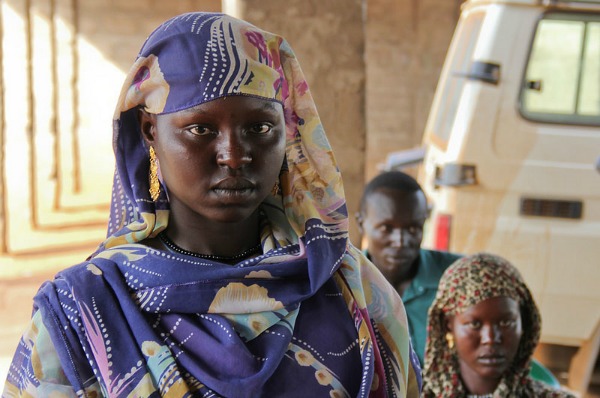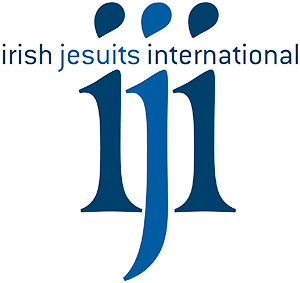
The desire to learn in both refugee and local communities in Maban, South Sudan is strong. JRS trains teachers to help improve their skills in the classroom.(Angela Wells/Jesuit Refugee Service)
Shane Burke works for the Jesuit Refugee Service (JRS) and is based in Nairobi, Kenya. Shane made the decision to volunteer his time and skills through the Voluntary Missionary Movement in Ireland. He shares updates with the Irish Jesuit Missions on Kakuma Refugee camp in Kenya and on Northern Uganda where there is a growing influx of refugees especially from conflict-ridden South Sudan.
Environmental and manmade causes for movement
Kakuma is home to about 170,000 children women and men. It is 25 years old and originally came about as a result of refugees from Somali escaping internal warlords’ disputes there. More came from Somalia in 2011 following a drought that drove the people out in search of food. So says Shane, “there are both environmental and manmade causes for movement.”
South Sudan conflicts are entirely manmade however since its Independence in 2011 and even before that because of the civil war. Many refugees settled in Northern Uganda as a result. When Independence was declared, they returned to their homes only to flee to Northern Uganda again when conflict re erupted in 2011. An interesting dynamic has occurred—it’s almost as though they are returning ‘home’ to their refugee camp.
{youtube}QSNBTNYGhYM{/youtube}
Helping the whole person at Kakuma Camp
Helping the whole person is the approach JRS adopts using psychosocial care and different forms of healing to try and address the trauma that many have experienced.
Education too is part of the holistic approach. In the Safe Haven for vulnerable children and women, acquiring new skills means going back to formal schooling and literacy classes and also engaging in counseling and healing art therapies to come to terms with painful pasts and move on to positive futures. These services have made an impact on the lives of the refugee community and greatly improved their physical and emotional wellbeing as a result.
While all residents are ‘vulnerable persons’, within the camps are those who are particularly so: elderly people; those living with disabilities; children with cerebral palsy. Training is given to their mothers in physiotherapy and nutrition to improve the quality of life for their children. It has had a huge impact on the confidence of the mothers who simply didn’t know what to do for their disabled children.
Kalobeyei Camp with 30,000 is a new addition to Kakuma and has grown into a seperate camp. It’s designed to cater for the increased influx of South Sudanese that make up 35% to 55% of the residents, along with Somalis and others. It’s a very structured style camp compared to the older style of camps. Built in a dry environment, water is one of the issues there. The plan is to pipe water from Kakuma and to build a reservoir there.
“Kakuma is 25 years old now” says Shane ”it is very hard for anyone born there to call it ‘temporary’. We don’t see these camps going anytime soon or the people being in a position to return to their homes.”
Challenges within Maban Refugee Camp, South Sudan
In the north of South Sudan, JRS works with Muslim refugees in the sprawling refugee camp of Maban. It is home to about 130,000 people. Some have been ‘forcibly displaced’ —they were forced to move—others are ‘internally displaced persons’ (IDPs). They have been living within the borders of South Sudan but have moved to be near the adjacent town. Sometimes conflict occurs between different tribes within the camp itself.
JRS also works with the ‘host community’ i.e. the inhabitants who were living in a location before the refugee influx. This is becoming a big issue for the agencies especially those with ‘refugee’ in their names. The implication is that the refugees are in receipt of services that the ‘host’ community is not entitled to and that can cause conflict.
Thus the focus on providing the same services also for host communities is growing for NGOs, depending on an organisation’s mandate.
{youtube}QGyOWleOkEM{/youtube}
Shane works with all three groups i.e. host, refugee and IDPs. The programme of work covers psychosocial care, teacher training and an early childhood development school for the local community. In another—Doro Camp—there is an emphasis on psychosocial care and out reach services.
Living with ongoing conflict
Teacher training can be interrupted by conflict within the camps and the external environment. The outreach element of training within the classroom is often halted for safety reasons and the teachers remain at home until it’s safe to travel.
IDPs bring challenges to bear on the programme work too. Being ‘internally displaced’ implies they have been made homeless and would return to their homes when safe to do so. This model deviates however, when services are set up for IDPs and they choose not to return home.
“It’s a tricky situation”, admits Shane and one solution has been to construct a ‘temporary’ school which works well and is accessed by both IDPs and host communities. However the dilemma remains: should the school be made permanent at the risk of enabling the IDPs knowing they may decide not to return to their homes.
The United Nations’ World Refugee Day is observed on June 20th annually. It honours the courage, strength and determination of women, men and children who are forced to leave their homes and countries under threat of persecution, conflict and violence.
The Irish Jesuit Missions also honours those who give generously of their energies and skills, often putting their security at risk while working on the frontiers with refugees.
Author: Article written by Irish Jesuit Missions communications, 16th June 2017
The Jesuit Refugee Service works contribute to the 17 UN Sustainable Development Golas. SDG 16—peace, justice and strong institutions—aims to significantly reduce all forms of violence, and work with governments and communities to find lasting solutions to conflict and insecurity. Strengthening the rule of law and promoting human rights is key to this process, as is reducing the flow of illicit arms and strengthening the participation of developing countries in the institutions of global governance.

